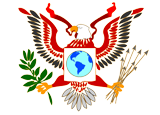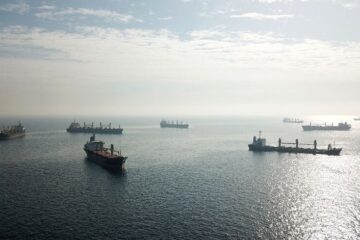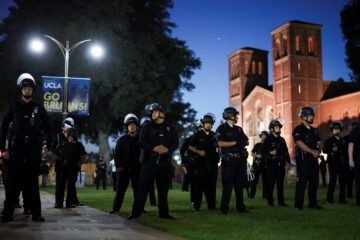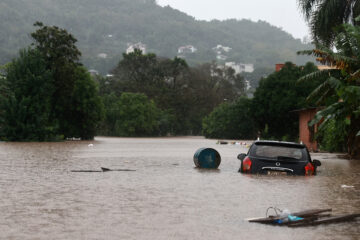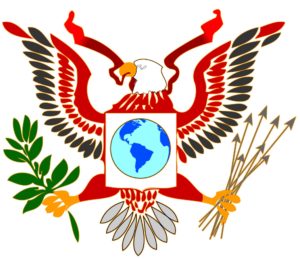Slovenia deploys troops to border as migrant exodus swells
Led by riot police on horseback, thousands of weary migrants marched across western Balkans borderlands as far as the eye could see Tuesday as authorities cautiously lowered barriers and intensified efforts to cope with a human tide unseen in Europe since World War II.
Leaders of Slovenia deployed military units to support police on their overwhelmed southern border with Croatia, which delivered more than 6,000 asylum seekers by train and bus to the frontier in bitterly disputed circumstances between the former Yugoslav rivals.
With far too few buses available in Slovenia to cope, most people walked 15 kilometers (9 miles) on rural lanes past cornfields and pastures to reach a refugee camp, a challenge eased by sunny weather after days of torrential rain, fog and frigid winds.
On Slovenia\’s frontiers with Croatia and Austria, aid workers toiled to erect enough tents and other emergency accommodation to shelter up to 14,000 travelers, more than five times the tiny nation\’s previous official limit.
Interior Secretary of State Bostjan Sefic told reporters in the Slovene capital, Ljubljana, that the pressure on border security with Croatia had grown "very difficult with an enormous number of people." He said Slovenia, an Alpine land of barely 2 million, needed much more help immediately from bigger EU partners to cope or the country might have to adopt border-toughening measures.
"If this continues we will have extreme problems. Slovenia is already in dire straits, an impossible situation," Sefic said as lawmakers debated whether to increase the military\’s powers to manage border security.
In Brussels, Slovenian President Borut Pahor met European Union leaders and said he expected his country to apply for emergency financial aid and border patrol reinforcements from EU partners.
Hungary, long the most popular eastern gateway for people fleeing conflict and poverty in the Middle East, Asia and Africa, has padlocked its borders for migrants progressively over the past month, forcing the tide west through Croatia and Slovenia. All three nations have expressed fears of ending up stuck accommodating tens of thousands of asylum-seekers indefinitely if other EU nations farther north close their borders too.
Croatia, which has erected relatively few shelters along its borders with Serbia and Slovenia, directed thousands into special trains and bus convoys Tuesday to Slovenia in an apparently concerted effort to clear a backlog built up since Saturday, when Hungary closed its borders with Croatia.
The Slovenes complained bitterly that Croat officials were ignoring their requests for advance warnings of migrant deliveries. But Croatia\’s interior minister, Ranko Ostojic, insisted that the opposite was true and Slovenia was dragging its heels in accepting people quickly enough. He asserted that Croatia was admitting people twice as quickly from Serbia.
"If we are receiving 10,000, then 5,000 people have to be transited to Slovenia," he told The Associated Press in an interview near the Serb-Croat border.
Tensions flared on Slovenia\’s border with Austria as police in both countries struggled to keep migrants walking in orderly queues to buses bound for Austrian refugee centers. At one point, a few hundred people being confined by Slovene police broke free and ran across the border — seeking to get in front of others waiting hours for buses. Slovene officers\’ bursts of pepper spray failed to stop them, but Austrian police erected physical barriers that blocked the interlopers\’ path to buses. They eventually were persuaded to walk back to the end of the line.
The trekkers\’ primary goal is to reach Germany or Scandinavian nations, which traditionally have offered strong supports for asylum seekers. But even the most liberal and wealthy European countries are signaling plans to increase deterrents to what they view as an unwanted overflow of immigration that should be managed closer to home. To that end, EU leaders last month pledged to boost financial aid by at least 1 billion euros ($1.1 billion) to camps hosting an estimated 4 million people in Turkey, Lebanon and Jordan.
Yet the EU often fails to meet its own more modest targets. The bloc\’s border security agency, Frontex, announced Tuesday that EU members had fulfilled barely a fourth of its months-old appeal to provide border guard reinforcements for Greece and Italy, the two biggest entry points for refugees and other migrants. Frontex said 291 guards would be deployed to both countries immediately but the director, Fabrice Leggeri, said he hoped EU members would provide more staff to permit Frontex to move "much closer to our goal."
The Netherlands, another common destination for asylum seekers, unveiled a new letter of caution for those seeking a Dutch refuge. The letter, to be provided to all new arrivals, warned they would face lengthy legal delays and spend a year or more living in "an austere reception, such as in sports centers or tents, where many people share the same lodgings" while their asylum applications are considered.
Dutch Junior Justice Minister Klaas Dijkhoff said that given the country\’s shortage of public housing, even successful applicants might be assigned to long-term housing in converted shipping containers or disused office blocks.
The history of undocumented immigration to Europe suggests that, every time one route is closed, another opens. To that end, nations bordering Russia signaled Tuesday that they intended to tighten security at border crossings to deter increased traffic from the Middle East and Vietnam.
Norway said it intended to reject asylum applicants at the border if they had a legal right to reside in Russia. Justice Minister Anders Anundsen highlighted the increased flow of people seeking to enter Norway via the remote Arctic border post in Storskog, many of whom arrive on bicycles because pedestrian crossings are not permitted there. Last week, he said, about a quarter of Norway\’s total intake of 2,000 asylum-seekers entered via Storskog.
Anundsen said Norway intended to reject refuge-seekers with "strong connections to Russia through dual citizenship, residence permits or visas."
The Baltic nation Latvia, meanwhile, said it plans to erect a fence along parts of its 270-kilometer (168-mile) border with Russia.
Interior Ministry spokeswoman Daiga Holma said a fence with motion-detection sensors would cover a third of the frontier as part of a 20 million euro ($23 million) project to boost border security. She said about 300 people mostly from Vietnam, Iraq and Syria have entered the Baltic country this year from Russia.
SOURCE: AP
[do_widget_area inner_adsbar]
